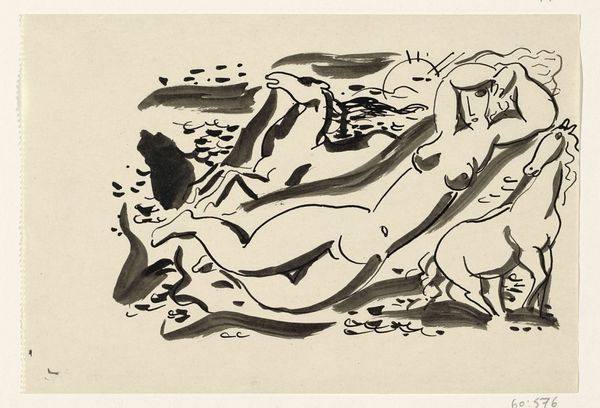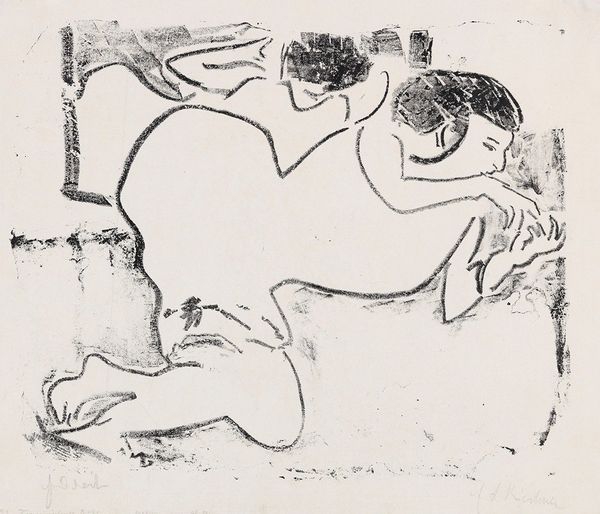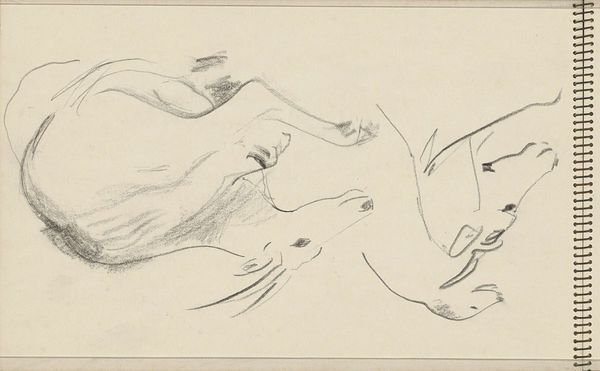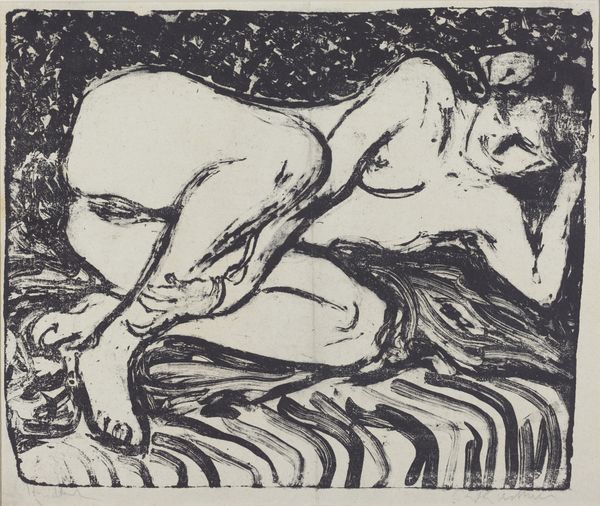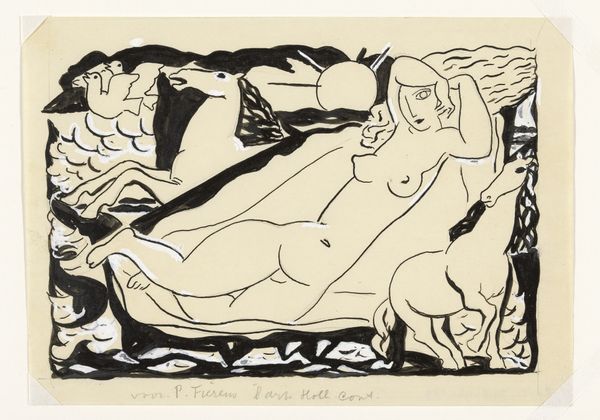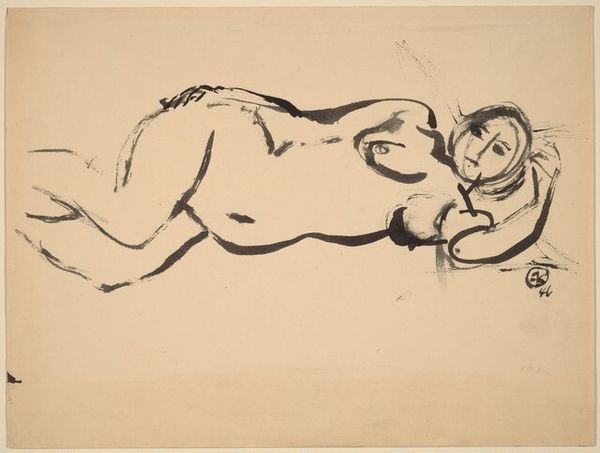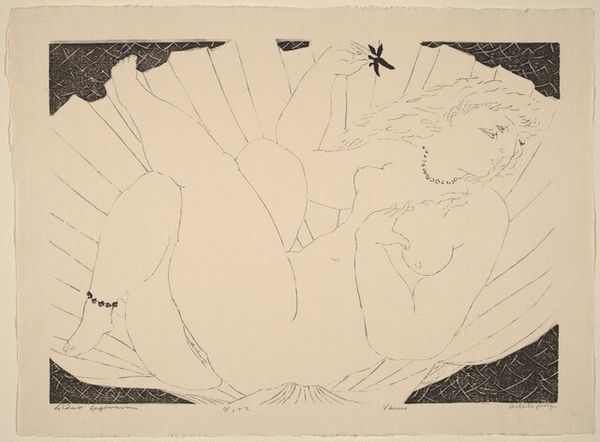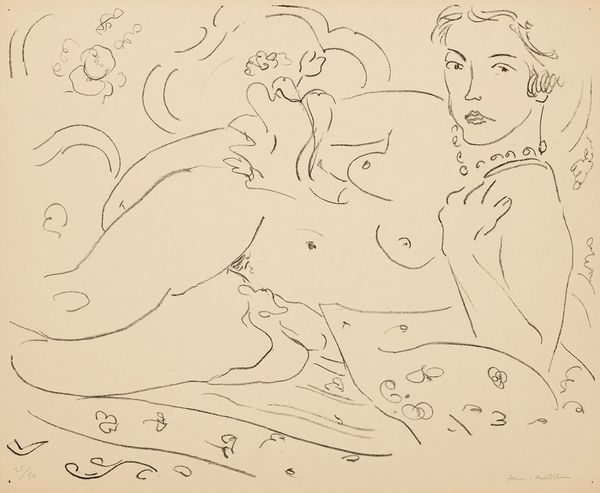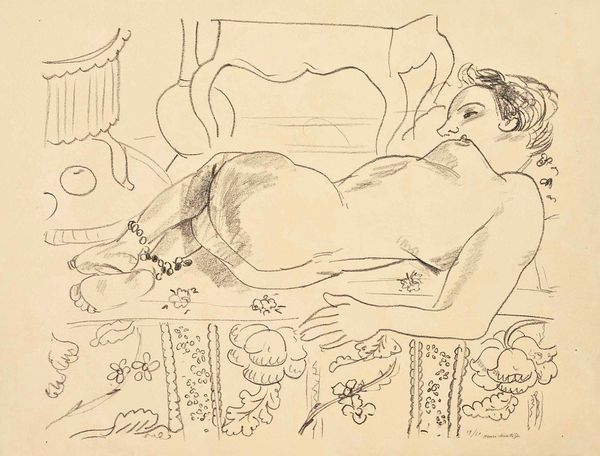
drawing, print, ink
#
drawing
# print
#
figuration
#
ink
#
mythology
#
nude
Dimensions: Image: 270 x 360 mm (irregular) Sheet: 305 x 452 mm
Copyright: National Gallery of Art: CC0 1.0
Editor: This is Walter Damon Giffard's "Europa," a 1933 print made with ink. There's something both classical and dreamlike about it; the stark black and white and simplified forms give it an ethereal feel. How do you interpret this work? Curator: Well, instantly, the mythic weight is undeniable. Europa and the bull, of course, carries centuries of artistic and cultural memory, but here Giffard isn’t just retelling a story. He’s exploring primal symbolism. Notice how Europa isn't resisting; her posture suggests a surrender, perhaps even a collaboration, which in turn evokes themes of transformation and destiny. Does the image evoke for you the sensation of inevitability? Editor: Yes, actually. There is an acceptance in her posture. But what about the somewhat odd style? It's not exactly classical, right? Curator: Precisely. The distortion and simplification invite us to consider the deeper psychological undercurrents. Think of the bull, for instance – a symbol of masculine power but also of fertility and instinct. Giffard isn't merely illustrating the myth; he is deconstructing its visual and psychological components, and rebuilding the image for the modern psyche. Editor: That makes sense. It feels both ancient and surprisingly contemporary. Curator: It does. He taps into archetypal imagery. So the work resonates with us regardless of whether we know the myth. It's in our collective unconscious. Ultimately, what do you make of it now? Editor: I see how Giffard uses the myth not just to tell a story, but to explore how symbols still speak to us on a deeper, almost subconscious level. Curator: Precisely! And that, in essence, is the enduring power of iconic imagery. It lives on.
Comments
No comments
Be the first to comment and join the conversation on the ultimate creative platform.
